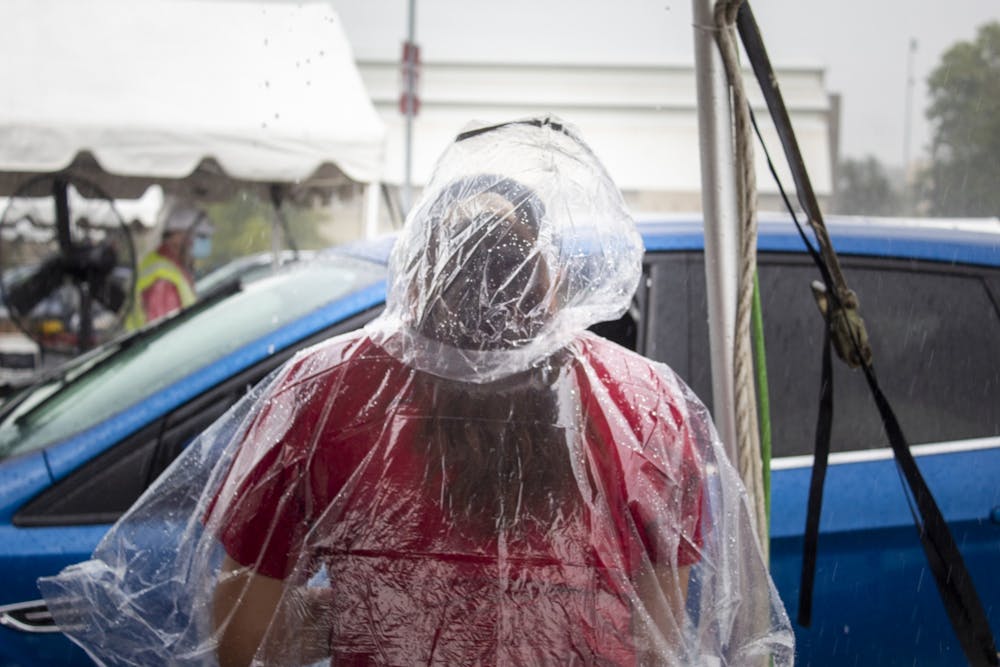IU began random testing to screen for COVID-19 this week. Some students have already been contacted via email to appear for testing. Here is what happens to IU students who test positive for COVID-19 or are identified as coming into close contact with someone who has.
Once a student tests positive for COVID-19, an IU staff member will conduct an interview over the phone with them to begin contact tracing. These contact tracers have been trained by the university over the past several months to efficiently monitor the spread of the virus. The staff will use phone calls and text messages to reach out to any contacts identified as being at risk.
Both on-and off-campus students who test positive will still be asked to monitor and report their symptoms to the university through the Twistle app. In the event where one’s symptoms should worsen, the app will alert an IU Health nurse who will follow up with the patient.
Kirk White, the co-chair of the Bloomington campus COVID-19 response unit, said the university is conducting random testing so it can continue to observe infection rates.
Students will be asked to either quarantine or isolate themselves based on their situation. Students will quarantine if they have been exposed to COVID-19 and are still awaiting results, while those who have tested positive will be asked to self-isolate. In both situations, students will keep a distance from others by living in a secluded space and having meals delivered.
On-campus students will be instructed to check into Ashton Center in the central neighborhood to isolate or quarantine. Students who are quarantining will reside in a separate building within Ashton.
Students are eligible to return to campus on a case-by-case basis. People in quarantine can move back to their dorms once they get a negative test and it has been 14 days since they were exposed to the virus with no symptoms. If they test positive or show symptoms, they move to isolation, according to White.
Students in isolation can leave 10 days after their first symptoms appeared as long as their health is improving and they have not recorded a fever in the previous 24 hours. If the student never had symptoms but tested positive, they must isolate for at least 10 days following their test.
If a student, on- or off-campus, is ever unsure about the next steps to take in their situation, they are recommended to reach out through the IU Health Portal for medical advice.
The buildings are equipped with staff members and rooms to accommodate up to 563 students. White said there are students already isolated in the center but estimates there are only around 30 people at this time.
“These are students, for the most part, that arrived on campus and tested positive as they arrived before they checked into residence halls,” White said.
Off-campus students and faculty are instructed to follow CDC quarantine and isolation guidelines but will not be asked to check in to Ashton since it was designed to provide for on-campus residents only.
Freshmen living in residence halls are expected to have a packed bag ready in case they should be transferred to Ashton to quarantine. While each Ashton resident will receive towels and scrubs, they are expected to bring clothing, personal toiletries and school work.
A full list of items the university recommends packing can be found here.
Students at Ashton will have access to laundry facilities and food delivery options. They may receive any packages sent to the Ashton center desk, but no guests are permitted.
IU does not currently disclose how many students have been moved to Ashton, but is planning to release the COVID-19 testing statistics in the future. White said the university may also include Ashton occupancy statistics in that data, but no plans have been solidified.
Freshman Ben Mercier said he wants to know how many beds are occupied in Ashton at all times so he can plan and avoid having to scramble to return home in an emergency situation.
“I would like to know because I don’t want to be told ‘Oh, you have to pack up and get out tomorrow,’” Mercier said. “Having at least an idea if we’re going back soon or not would be nice.“
Currently, IU does not have other spaces for on-campus students to quarantine or isolate. If needed, White said the university could also inquire about using hotel properties.
“That additional space could be needed for other groups like greek housing,” White said. “They might be faced with a situation where they don’t have enough quarantine and isolation space at their house.”
Students will also have the option to quarantine or isolate themselves in their hometowns if they can be picked up from campus. If a student can leave campus on the day he or she has tested positive or was identified as a close contact, they may not need to check into Ashton.
Freshman James Malony said the idea of abruptly leaving his dorm is a bit daunting but still thinks it’s a better alternative than going back home.
“It is kind of scary,” Malony said. “I might have been doing everything right and still have to get sent to some dorm.”




